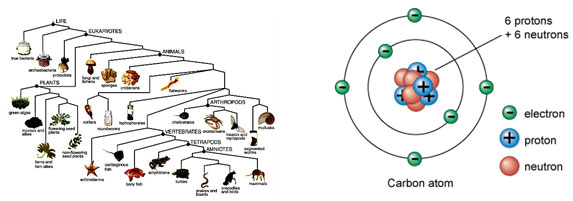There are three types of models. Click on the boxes below to learn more about each type of model.
Sources of images used for this section as they appear, top to bottom:
- Atom, ehow.com
- Math Symbols, Kenneth Kho
- Light bulb, free grabber
- Solar System Model, HR Scientific Works
- Globe, Wold Maps Online
- Human Torso, HR Scientific Works
- Hurricane Katrina, Gstatic
- Car, OCAL, Clker
- Classification, The Diversity of Life
- Atom Model, Universe Today





